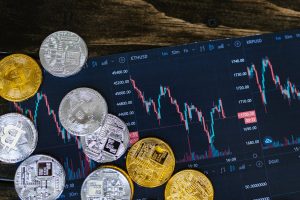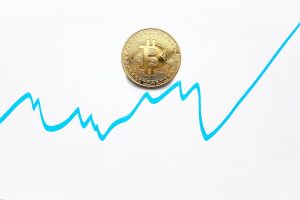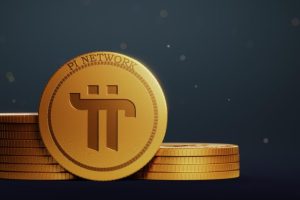In 2020, cryptocurrency and blockchain underwent different busy cryptographic events. These range from Bitcoin halving which usually comes up in the period every four years. During the time of Bitcoin halving different big financial institutions was investing a large sum of funds in Bitcoin.
In the same year 2020, another trend that drew people’s attention was DEFI and also follows by NFTs. If you have been in the crypto industry, you must have heard about “Non-Fungible Tokens and DEFI” and might not have a full knowledge of what there are. Well, this article will be exploring on what DEFI and NFTs are, the difference between fungible and non-fungible tokens, the difference between centralized finance (CEFI) and decentralized finance (DEFI), what are decentralized applications, and the difference between NFTs and DEFI.
What Is Decentralized Finance?
It is a financial system that uses cryptocurrencies which were programmed via smart contracts to develop exchanges, insurance services, and lending platforms without center intermediaries. Decentralized finance eliminated center intermediaries just like in cryptocurrencies when carrying out transactions.
What Are NFTs?
Non-fungible tokens are cryptographic tokens that are used for tracing special individual intellectual property written on smart contracts. NFTs are special and different as a result of that, there cannot be replicated. You could consider them to be collectibles. Each NFT is special, there cannot be exchanged for one another. Using $BTC as a case study, there are 18 million of them in use today. Bitcoin is all the same, unlike NFTs which is a contrast to it. NFTs are interchangeable.
Different Between Fungible And Non-Fungible
Initially, it can be difficult to know the difference between fungible and non-fungible tokens. However, the difference is simple to comprehend. Anything that can easily be interchangeable, is regarded as a fungible item. Their worth with other things are same, as a result of that, there can be interchange.
For instance, using a fiat currency, a dollar as an illustration. If someone is indebted to you with a dollar, you will expect the person to pay you back your dollar, but not expect the person to pay you the same dollar that you gave out. All that you will be expecting is the same dollar value you gave to the person and not the same dollar that you gave out. As that, we can say that the dollar is fungible.
So, when it is said that an asset is fungible it means that that asset has the ability to be exchanged for another asset of the same type. Oil can also be an example of a fungible item.
Non-fungible item on the other hand is the opposite of a fungible item. There can not be exchanged for another item because of how special there are, their value with another item is not the same.
For instance, if your father gave you an old car as a gift because he bought another for himself, there will be no car in this world that will have the sentimental value of that car. Or a piece of art is non-fungible if it was produced specially for you and cannot be replaced with another object of equal value.
Difference Between Centralized Finance (CEFI) And Decentralized Finance (DEFI)
Every financial system such as investment companies, banks, and insurance institute are typically centralized or controlled by a central individual. In a centralized exchange, your money is controlled by a trusted entity. The entity determines your transaction fee or trading activities on the centralized exchange. Both centralized and decentralized finance were created to make the use of cryptocurrencies easy for financial activities, although both of them work in different ways.
Decentralized finance is a financial system that gives an individual full authority over their assets through the help of blockchain technology in order to enhance financial activities. Unlike in centralized finance where trusted entities regulated people’s funds, in decentralized finance individual, have the capability to control their funds.
Decentralized Applications (DAPPs)
Decentralized applications are applications that grant an individual access to a decentralized network which enables them to buy, sell, trade, lend, and borrow cryptocurrencies. These applications are often automated through smart contracts on Ethereum platforms, which determines the guidelines on how financial service will operate in a way of decentralization. It is impossible to have control over these guidelines if it has been programmed except if it was coded on the smart contracts already.
Differences Between NFTs And DEFI
There are numerous differences between NFTs and DEFI. These differences can be seen in several aspects of life such as technological aspect, economic aspects, differences in their functionality, and conceptual differences. In the subsequent paragraph, we will be discussing these differences under these categories.
Technological Aspect:
Decentralized finance makes use of blockchain technology for smart contracts and decentralized ecosystems. Whereas, NFTs depend on blockchain technology for ownership, verification, tokenization, and scalability.
Economic Aspect:
DEFI offers and generates profits via trading costs, interests, etc. While NFTs are influenced by art work or collectible markets, and generate their value through the originality of the related digital asset.
Functionality difference:
Decentralized finance provides financial services such as; trading, borrowing, yield farming, and lending. Whereas NFTs serve as authenticity for digital assets.
Conceptual difference:
Decentralized Finance offers decentralized services, while NFTs offer indivisible digital assets.
Summary
The two distinct facets of blockchain technology are NFTs and DEFI. NFTs concentrate on creating and trading different digital assets, while DEFI offers a decentralized structure for different financial services. Having a solid knowledge of NFTs and DEFI is important for understanding the rapid development in blockchain technology and analyzing each technology’s potential in transforming certain ecosystems and taking the opportunities there came to offer.






